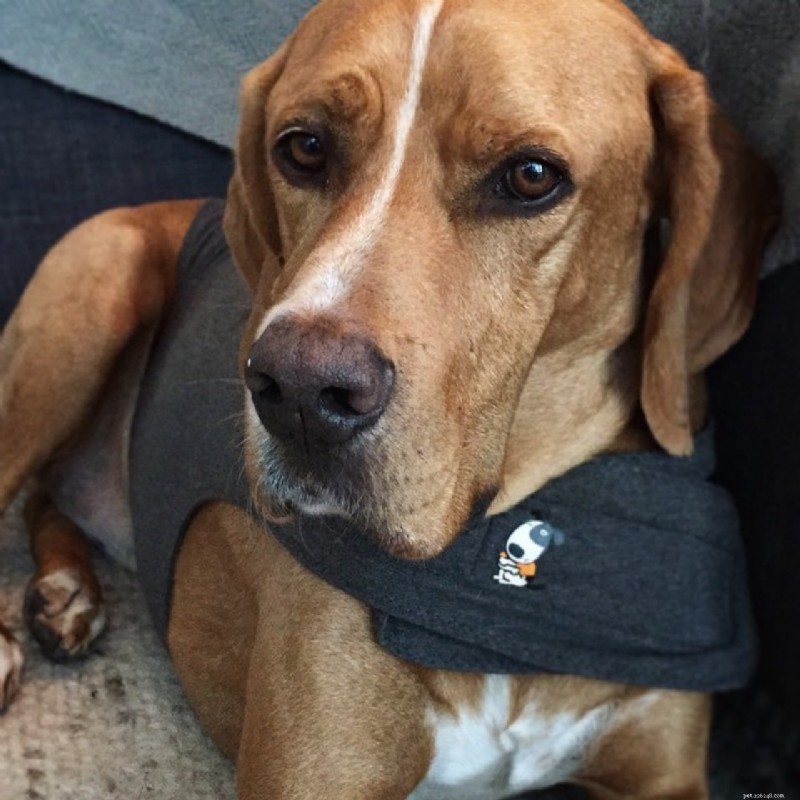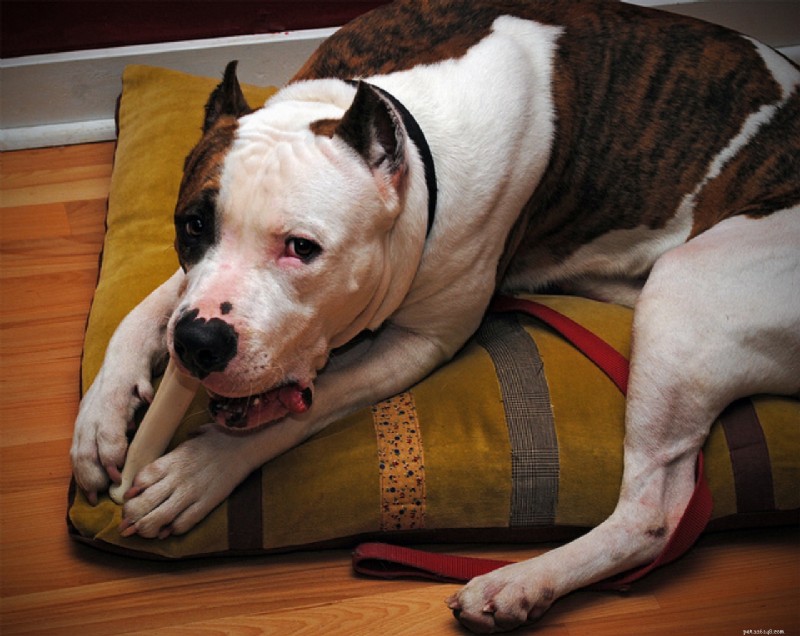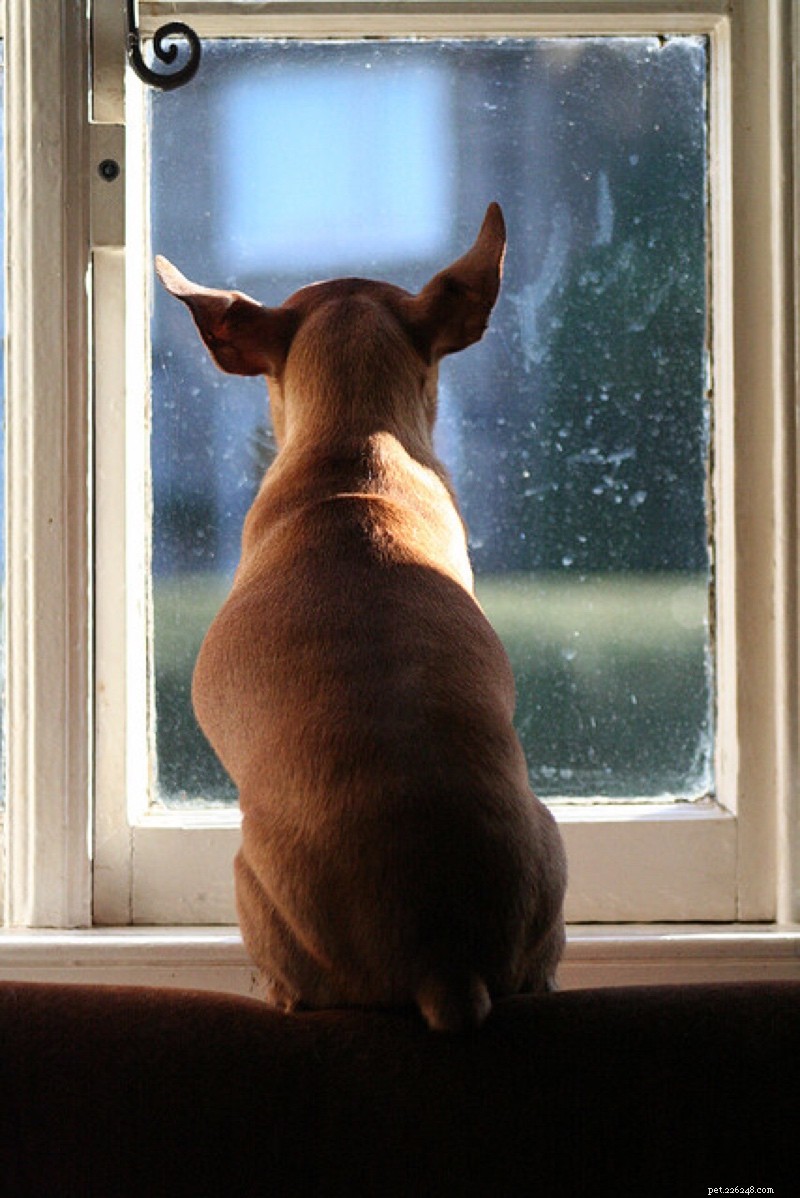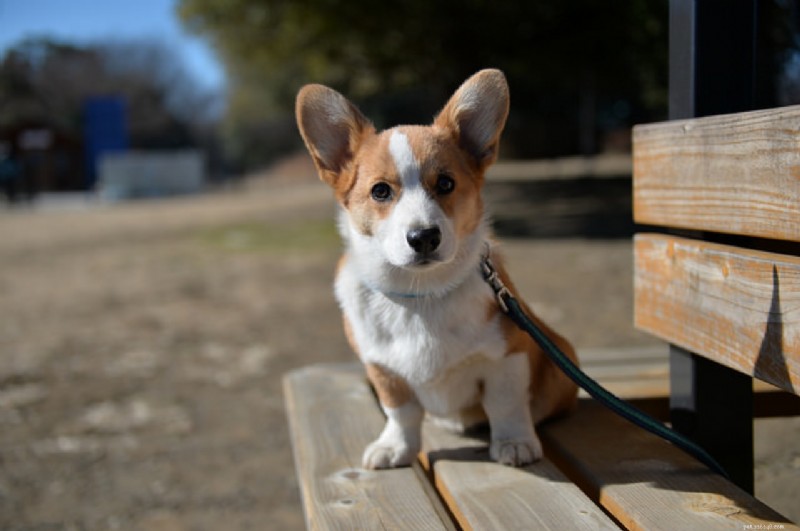Como acalmar um cachorro

O verão é uma estação de descanso e relaxamento, mas muitas vezes a diversão dos humanos pode afetar nossos familiares de quatro patas.
Acalmar um cão envolve aprender a difundir o tipo específico de ansiedade do seu animal de estimação. A ansiedade canina geralmente resulta de um dos dois fatores comuns.
- Os ouvidos hipersensíveis dos caninos têm quase o dobro do alcance da audição humana, fazendo com que ruídos altos ou profundos os afetem mais.
- Outros cães têm ansiedade situacional, causada por ficar sozinho em casa ou interagir com outros cães.
Embora seja difícil deixar seu cão sofrer, às vezes confortar fisicamente o animal pode fazer mais mal do que bem, pois fornece um reforço positivo para uma resposta ao medo. Em casos graves de ansiedade canina, pode ser necessária medicação ou terapia comportamental; consulte o seu veterinário para quaisquer mudanças repentinas de comportamento.

Tempestades
O medo de trovões dos cães é bem conhecido; uma pesquisa do fabricante de roupas para animais de estimação ThunderShirt estima que mais de 17% dos cães sofrem de fobia de barulho. Por que os cães têm medo de trovão? Os behavioristas de animais não identificaram qual parte de uma tempestade mais enerva os cães – relâmpagos, trovões ou ventos fortes e janelas de chuva. Uma teoria postula que os animais de estimação podem sentir a queda na pressão barométrica ou a carga elétrica no ar.
A ansiedade do trovão em cães pode ser afetada pela raça; cães de pastoreio e cães de caça têm uma maior incidência de fobia de tempestade. Isso pode ser atribuído a características inatas como reflexos rápidos e não agressão, que levam os cães a reprimir emoções após uma intensa reação ao trovão. Animais de estimação com histórico de abuso ou abandono também são mais propensos a experimentar uma fobia de trovão e mais ansiedade em geral. Isso pode ser devido a uma associação negativa com o som do trovão ou por falta de socialização. Cães de resgate, em particular, experimentam mais ansiedade devido à natureza de alto estresse dos abrigos ou eventos traumáticos passados.
A terapia sistemática de dessensibilização é recomendada para cães com ansiedade associada ao ruído. Isso envolve recriar o ambiente de tempestade em uma escala menor, como tocar trovões em baixo volume ou imitar um relâmpago com uma lanterna. O cão é recompensado apenas quando os sinais de ansiedade ou medo não estão presentes, reduzindo gradualmente a associação negativa do som. Sempre consulte seu veterinário antes de iniciar qualquer nova mudança de estilo de vida. Se a terapia não for uma opção ou não apresentar melhora, a medicação pode ser necessária.
Fogos de artifício

Every 4th of July dogs across the nation cower in terror. Dogs and fireworks are mortal enemies, thanks to the pyrotechnics’ low decibel sound. To human ears, fireworks are a dull whine – dogs hear, see and smell the pretty lights as a mortal danger to them. Dog Whisperer Cesar Milan says a dog’s anxiety response is “a survival instinct,” designed to keep the animal alive in potentially dangerous situations.
Fireworks can be even scarier to dogs than thunderstorms, which at least provide animals with some warning signs of the impending noise. (Remember, dogs feel the drop in air pressure and increased electrical charges that precipitate a thunderstorm.) It is possible to retrain a dog’s natural fear instinct through repeated exposure, as in the previously discussed systematic desensitization therapy. For best results, start when your pet is a puppy and acclimate him to a variety of loud noises including car horns, children yelling, and motorcycles.
If all else fails, try your best to comfort or distract your dog. Before the fireworks begin, create a soothing environment for your pup, including a favorite bed or crate as well as toys. Rawhide chews or puzzle toys can distract dogs for hours, or put on some scientifically-sound music for dogs. If your pet is accident-prone, take a potty break before you settle in or lay some absorbent potty pads down as a precaution.
Separation anxiety

This type of dog anxiety is very common, especially among dogs who were previously surrendered or abandoned. Dogs are very social animals who typically prefer living in “packs,” be the members human, canine or even feline. When a dog with separation anxiety is left alone, he may believe he has been abandoned again; often this results in destructive behaviors as the panicked pet attempts to escape or look outside.
Young, male, mixed-breed dogs are the most likely to develop separation anxiety. Animal behaviorist Dr. Barbara S. Simpson denies any relationship between so-called “spoiling” a pet and the development of separation anxiety, but does note that close dog/pet parent relationships are more likely to result in separation anxiety.
With the rise of the pet-friendly workplace, many pet parents find taking their dog to work solves the issue. Doggy daycare or adopting a canine companion may reduce the feelings of isolation that lead many dogs to engage in destructive acts like soiling the carpet or chewing furniture. A long-term solution involves the pet parent modifying his or her routine; dogs learn and associate behaviors like putting on shoes with leaving the house. Dr. Simpson suggests practicing “graduated departures,” like putting on shoes and then returning to the couch for a while. In an American Veterinary Medical Association study, 62 percent of dogs with separation anxiety improved through simple acts by pet parents – no punishment for destructive behaviors, providing a chew toy before leaving, and increasing exercise.
Social anxiety

Even dogs find themselves uneasy in some social situations. Just as select pets are aggressive, others are shy and suffer from social anxiety. Often the two overlap – a scared dog is more likely to lash out – with anxiety-related fear leading to aggression. Before placing your pet in an unknown environment, consider how he or she deals with certain stressors. Crowds, children, other dogs, food smells, and loud music are all very stressful for a dog. Symptoms of dog anxiety include trembling, urination, growling, and classic body language signs like a tucked tail, pulled back ears, and avoiding eye contact.
Social anxiety in dogs can be caused by a variety of factors, including a traumatic event like a dog fight. Cesar Milan notes that the issue sometimes relates to poor self-esteem, recommending confidence-building activities and interactions with other dogs. Throw a ball for your pet, giving praise when he returns with it; even providing treats for a successful potty break will boost self-esteem.
Lack of socialization is usually the culprit, says author and dog trainer Victoria Stillwell of It’s Me or the Dog . “When you have a puppy, you have to introduce it to 100 new experiences and all different kinds of people and…dogs in a lot of different environments.” Start slow with adult dogs, gradually introducing stressful sounds and rewarding non-fearful responses. At the dog park, redirection is key to helping your pet stay calm. Introduce a tennis ball or run some obstacles, introducing one dog at a time to your pet. Ask other pet parents with solo leashed dogs if you can introduce your pet one-on-one for a practice round.

